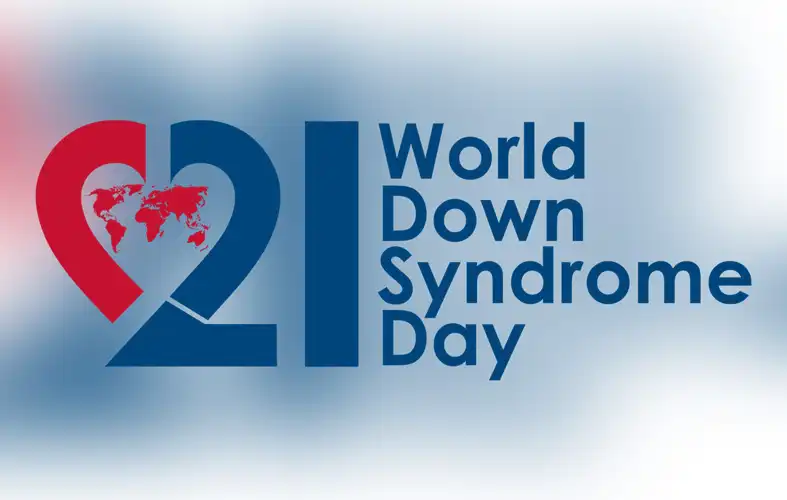This year, the global theme is “Leave no one behind”. All people with Down syndrome must have opportunities to live fulfilling lives, included on a full and equal basis with others, in all aspects of society.
What is Down syndrome?
Down syndrome is a genetic disorder that causes intellectual disability and other physical and learning challenges. The disorder is also known as ‘trisomy 21’, as it is caused by the presence of an extra chromosome 21, in the genetic make-up of an individual.
What is screening methods for Down’s syndrome in pregnancy?
Screening tests are offered to all pregnant women during their first and second trimester. The first trimester screening involves bloods test and an ultrasound. These tests will only indicate if your baby is at risk of having Down syndrome. In order to confirm a diagnosis, you will be offered a diagnostic test by either amniocentesis or chorionic villus sampling.
What confirms the diagnosis of Downs Syndrome at pregnancy?
First trimester screening is a prenatal test that offers early information about a baby’s risk of certain chromosomal conditions). An ultrasound exam to measure the size of the clear space in the tissue at the back of the baby’s neck (nuchal translucency is) is used to detect.
Certain second trimester markers for Down’s syndrome that are identified in an ultrasound are more significant than others like:
- Absent or small nose bone.
- Dilated brain ventricles.
- Mild kidney swelling.
- Bright spots in the heart.
- ‘Bright’ bowels.
- Shortening of an arm bone or thigh bone.
- An abnormal artery to the upper extremities.
To know more about these screening tests during your antenatal care consult our experienced obstetrician and gynaecologists at Wockhardt Hospital.
What is Triple Test Marker?
A Triple marker test is a blood test conducted during pregnancy. It does not provide a diagnosis; rather it simply indicates any potential genetic abnormalities in the baby.
This is based on blood tests which are carried out between 15 and 21 weeks of pregnancy. The tests measure various “markers” in your blood. The results of the triple screening are usually available in one or two weeks. It detects the levels of AFP (foetal protein), HCG, and estriol in the blood .If it’s a positive result, further tests such as amniocentesis (testing the fluid from inside the uterus) are usually done to confirm conclusively whether your baby has Down’s syndrome.
Who are at the risk of Down syndrome?
A woman’s chances of giving birth to a child with Down syndrome increase with age , because older eggs have a greater risk of improper chromosome division. A woman’s risk, of conceiving a child with Down syndrome increases after 35 years of age. It is advisable for women who are older, to screen themselves at the time of antenatal check-ups.
What are common signs of Down syndrome in a child?
- Decreased or poor muscle tone.
- Short neck, with excess skin at the back of the neck.
- Flattened facial profile and nose.
- Small head, ears, and mouth.
- Upward slanting eyes, often with a skin fold that comes out from the upper eyelid and covers the inner corner of the eye.
- All people with Down syndrome have some degree of personality and intellectual disability or developmental delay, which means they tend to learn slowly and may struggle with complex reasoning and judgment.
How does one manage patient of Down syndrome?
Down syndrome (trisomy 21) isn’t a disease, or condition that can be managed or cured with medication or surgery.
The goal of treatment, therefore, is not to address the disorder itself, but rather the variety of health issues, medical conditions, and physical, developmental, and intellectual challenges that people with this condition, may experience throughout their lives.
What are the different therapies to support patient?
Physical therapy: Most babies with Down syndrome have low muscle tone that can slow their physical development and, if not treated, lead to problems such as bad posture later in life. Physical therapy can help them to develop muscle tone and strength, and also teach them how to move their bodies in appropriate ways that help their daily functioning. At Wockhardt hospital we have specialised physiotherapy services for children suffering from this condition.
Speech therapy: Children with Down syndrome often have small mouths and slightly enlarged tongues—features that can make it hard for them to speak clearly. Hearing loss, also can affect speech development. With the help of speech therapy, a child with Down syndrome can learn how to overcome these obstacles and communicate more clearly. Some kids also benefit from learning and using sign language.
Occupational therapy: This type of therapy helps children develop the skills; they’ll need to be as independent as possible. This can include a range of activities from learning to pick up and let go of objects to turning knobs, pushing buttons to self-feeding and dressing.
The goal of this multifaceted approach to treating Down syndrome, is to help people with the disorder successfully make the transition from living with their families as children to living as independently as possible as adults.
To know and understand more about this disorder please visit our paediatrics department at Wockhardt Hospital.




